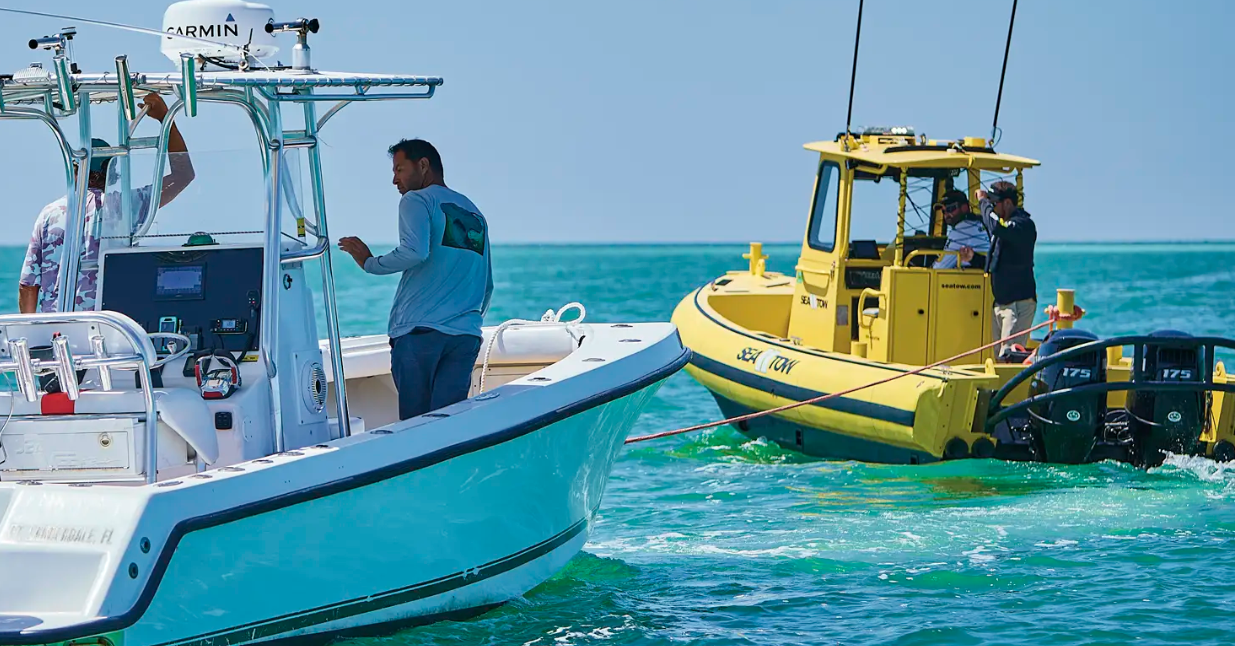You may have noticed that many of the web providers and DMS systems are now providing some version of a “Soft-Pull Pre-Qualification” program. These can provide information to you with regard to your prospective customer’s credit, which can help you successfully nurture more of your leads into sales.
Before we dive into these new tools, I want to emphasize: This is just part of your overall first contact program. The great news is: This potential new customer took the time to share information with you to help them get on the water! Assuming your lead management process ensures that leads are engaged effectively in a timeframe that can be measured in minutes, having insight into the customer credit history early in the process can help you steer around potential obstacles related to financing a boat.
I think you can expect these online pre-qualification tools to become more and more prevalent, so you can benefit from learning how to make the most of them today.
Like any tool, it is only effective if you understand how to use the information provided and what missing information you will need to add to know if the lead you just received is … A) A home run, B) Good but needs some work, or C) A big job to get across the finish line.
Here are five things you need to know to make the most of these programs.
1. Not All Credit Bureaus Are the Same. There are three credit bureaus (Experian, Equifax and Transunion). These three are sometime similar in the scores they report, but many times differ greatly. Not all creditors report to all three bureaus, and they don’t all report at the same time. Since the bureau you pull is a snap-shot of that moment, the bureau that has the most info may score a customer at 650 where the same customer’s creditors may not all report to the other bureaus. That could literally turn that 650 into an 810 … believe me, I’ve seen it.
2. It’s Not All About the Score. Credit score is a leading indicator; however, two customers with the same score may have a different profile to get there. The components of that score include on time vs. late payments, revolving vs. installment accounts, credit card utilization, time in the bureau, public records, inquiries, credit line size and so on.
You may have two customers with a 750 credit score. One has a $450,000 mortgage, several credit cards, low inquiries and no public records, but they don’t score an 800 because their credit card utilization (the credit card limit vs. their balance) is a bit high. Your other potential customer has the same score; however, they have a car loan, four credit cards and are in their 20s, so not a lot of time in the bureau. If both are applying for a $75,000 boat, are these two the same? That brings us to tip #3.
3. Understand the Other Credit Factors.
Debt – to – Income (DTI): How much do they earn each month vs. how much do they spend each month? As a rule of thumb, most lenders (not all), have a DTI Ratio ceiling of 40 percent, including the new boat payment. If they earn $10,000 per month and have $3,000 per month in bills, they are at a 30-percent DTI.
Comparable Credit – Most banks will want to see that the customer has several years paying a loan of greater value than the amount they are requesting. This goes back to what I said in “it’s not all about the score.” In that example, for a $75,000 loan request, the applicant with the $450,000 mortgage will pass this hurdle. The applicant with the $30,000 car and a few credit cards will not. Both have good scores, but very different profiles.
Time in Bureau: Banks will look at time in the bureau, typically looking for five years or more.
Proof of Liquidity on deals over $150,000 to finance: In plain speak, can they afford the boat? The general rules are: On a deal from $150,000 to $500,000, a lender wants to see a 1:1 ratio between the amount requested and the buyer’s liquid assets. $500,000 and up, they will want to see 2:1 and maybe more as you increase the amount financed.
Negative Issues: These include slow pays, charge-offs, bankruptcies and collections. Remember, each lender’s program is different, and not all negatives equate to a decline. How to successfully prep and tackle the Sub-Prime prospects is an article unto itself. However, understand, just because there are negatives, it does not mean the deal is dead. Find out the story behind the negatives. Collect any documentation that may show some negatives, like collections, are resolved and, in some cases, gather up tax returns and be prepared to overcome the negatives vs getting a decline, then playing catch up.
4. Know Your Bank Programs. There are multiple banks in our industry for Prime (800+), Near-Prime (700+) and Sub-Prime Credit (Below 700). However, each bank has their own internal scorecard and matrix to determine what types of loans they are willing to approve as is, which types they will want some more information, like financials, and which just are not a fit.
5. What about the non-credit issues: Employment, Residency and Collateral?
Employment Status: How long have they been at their job? Are they self-employed?
Residency: Is the prospect a U.S. Citizen? Do the lenders you work with have restrictions on the states in which they can lend? Is that based on where your dealership is or where the customer plans to keep the boat?
Collateral Loan-to-Value: When it comes to a loan, the credit bureau is not the only factor. The actual collateral value matters! Loan to Value simply put is what is the cost on the manufacturers invoice on a new boat or NADA or BUC on a used boat vs. What is the amount the customer is looking to finance? Each lender varies widely on this. Some will only advance 90% of the invoice. Others will go as high as 135% above invoice, including installed options.
Collateral Age: How far back will a lender go on pre-owned? What about the actual approval maturity, how long is a lenders approval good for? How long is the rate on that approval good for? This can vary by lender. Given the time between when a prospect applies and when the unit actually delivers, this can make or break a deal.
Hopefully, by now, you can see there is a lot more to a pre-qualification than just a score. The soft-pull bureau you are receiving is more of a pre-screen.
By understanding and incorporating the above information into your pre-qualification follow-up program, you will be able to maximize the effectiveness of these leads. Ultimately, you will help more customers get into the boat of their dreams, while saving yourself time and aggravation trying to fit square pegs into round holes just because the initial credit score looked good.
MRAA PRO TIP: For more on reading credit reports and making the most of pre-qualification programs, download MRAA’s Mini-Guide: How to Build a Pre-Qualification Program or MRAA’s Mini-Guide: How to Read a Credit Report.

Jared Zimlin has served the marine industry for over 22 years, helping dealers and manufacturers by creating solutions for their retail finance, wholesale finance, equipment leasing and revolving credit needs. He has been a speaker and supporter of MRAA and various manufacturer meetings and 20 groups, helping dealers learn and achieve greater success in their F&I efforts throughout his entire career. Currently, Jared is the Business Development Director at Elite Recreational Finance, which recently partnered with Chaparral and Robalo to build the engine that runs their Enriched Lead Pre-Qualification Program. For more information, visit EliteRFS.com.




